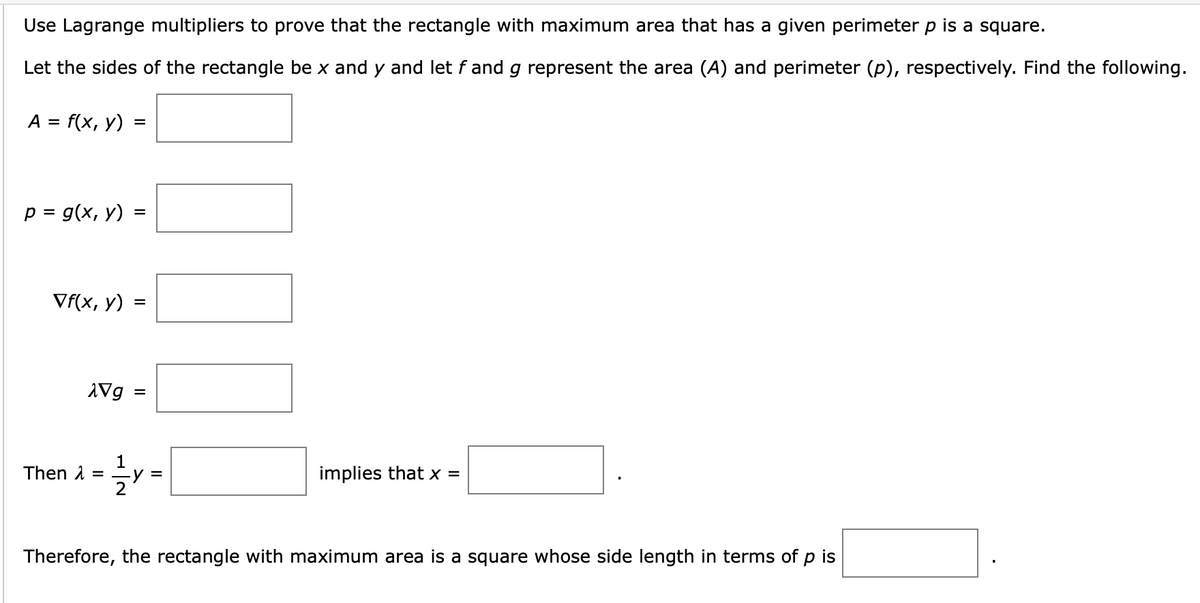Use Lagrange multipliers to prove that the rectangle with maximum area that has a given perimeter p is a square. Let the sides of the rectangle be x and y and let f and g represent the area (A) and perimeter (p), respectively. Find the following. A = f(x, y) = p = g(x, y) = Vf(x, y) = λVg = 1²/²y = Then λ = implies that x = Therefore, the rectangle with maximum area is a square whose side length in terms of p is
Use Lagrange multipliers to prove that the rectangle with maximum area that has a given perimeter p is a square. Let the sides of the rectangle be x and y and let f and g represent the area (A) and perimeter (p), respectively. Find the following. A = f(x, y) = p = g(x, y) = Vf(x, y) = λVg = 1²/²y = Then λ = implies that x = Therefore, the rectangle with maximum area is a square whose side length in terms of p is
Algebra & Trigonometry with Analytic Geometry
13th Edition
ISBN:9781133382119
Author:Swokowski
Publisher:Swokowski
Chapter9: Systems Of Equations And Inequalities
Section9.9: Properties Of Determinants
Problem 46E
Related questions
Question

Transcribed Image Text:Use Lagrange multipliers to prove that the rectangle with maximum area that has a given perimeter p is a square.
Let the sides of the rectangle be x and y and let f and g represent the area (A) and perimeter (p), respectively. Find the following.
A = f(x, y)
p = g(x, y)
=
Vf(x, y) =
=
XVg
=
Then ==y=
= ²/²y =
implies that x =
Therefore, the rectangle with maximum area is a square whose side length in terms of p is
Expert Solution
This question has been solved!
Explore an expertly crafted, step-by-step solution for a thorough understanding of key concepts.
Step by step
Solved in 2 steps with 2 images

Recommended textbooks for you

Algebra & Trigonometry with Analytic Geometry
Algebra
ISBN:
9781133382119
Author:
Swokowski
Publisher:
Cengage

Algebra & Trigonometry with Analytic Geometry
Algebra
ISBN:
9781133382119
Author:
Swokowski
Publisher:
Cengage